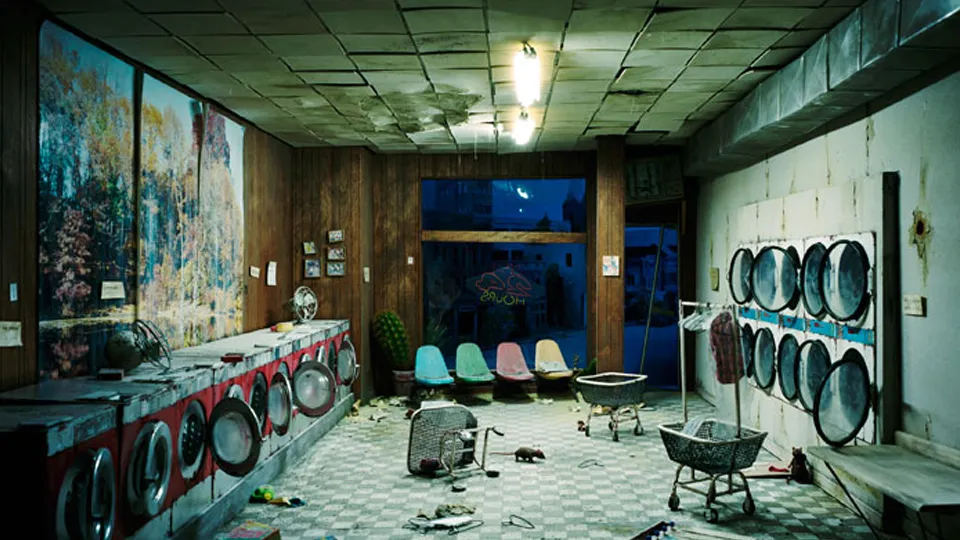Throughout history, clothing has transcended mere functionality to become a powerful canvas for expressing identity, resistance, and hope during humanity’s darkest hours.
🎭 When Fabric Becomes a Manifesto: The Power of Dress in Crisis
In times of turmoil, when conventional voices are silenced and traditional forms of expression become dangerous, people have consistently turned to an unexpected medium of communication: their clothing. From war-torn battlefields to oppressed communities fighting for freedom, dress has served as both armor and statement, offering protection not just for the body, but for the spirit itself.
The symbolism embedded in what we wear during catastrophic events reveals profound truths about human resilience. When economies collapse, when wars rage, when pandemics force isolation, the choices people make about their appearance become deliberate acts of defiance, remembrance, or survival. These decisions transform ordinary garments into extraordinary symbols that chronicle humanity’s ability to endure.
📜 Historical Threads: Dress as Rebellion and Identity
The French Revolution provided one of history’s most vivid examples of clothing as political statement. Aristocratic silks and powdered wigs gave way to the revolutionary tricolor cockade and the simple attire of sans-culottes—literally “without breeches”—working-class citizens who rejected the knee breeches worn by nobility. This wasn’t merely fashion evolution; it was a visible declaration that society itself was being reconstructed from the ground up.
During World War II, dress became a complex language of survival and resistance. In occupied France, women created extravagant hats as a form of silent protest against Nazi austerity measures. These towering creations, fashioned from scraps and ingenuity, became symbols of French spirit that couldn’t be crushed. Meanwhile, Jewish communities forced to wear yellow stars transformed this intended badge of shame into markers of solidarity and survival.
The Zoot Suit Riots: Fashion as Cultural Warfare
In 1943 Los Angeles, young Mexican American and African American men wore zoot suits—characterized by high-waisted, wide-legged trousers and long coats with padded shoulders. During wartime fabric rationing, these flamboyant suits became lightning rods for racial tension. The resulting riots demonstrated how clothing could simultaneously represent cultural pride, generational rebellion, and become the target of systemic discrimination.
💔 Dressing Through Destruction: War and Displacement
When conflict tears through communities, the relationship between people and their clothing becomes intensely personal and symbolic. Refugees fleeing violence often carry only what they can wear, making each garment a repository of memory and identity. A grandmother’s scarf, a father’s jacket, a child’s favorite shirt—these items become tangible connections to homes that may no longer exist.
In Syrian refugee camps, aid organizations discovered that providing appropriate clothing was about more than basic needs. Women requested makeup and nice dresses, not out of vanity, but to reclaim dignity stripped away by displacement. The act of choosing what to wear, of presenting oneself with care, became a fundamental assertion of humanity in dehumanizing circumstances.
The Sarajevo Fashion Show During Siege 🎨
Perhaps no event better illustrates fashion’s defiant spirit than the 1993 fashion show held in besieged Sarajevo. While the city endured constant bombardment, designer collective FAMA organized a runway show in a bombed-out building. Models walked through rubble in avant-garde designs, their presence declaring that culture, beauty, and creativity would survive even amid destruction. This wasn’t escapism—it was active resistance against the erasure of identity.
🌍 Economic Collapse and Creative Adaptation
Economic crises force communities to reimagine their relationship with clothing entirely. During the Great Depression, flour companies began printing their sacks with colorful patterns after noticing women were repurposing the fabric for dresses. This simple observation led to “feed sack fashion,” where rural families transformed utilitarian materials into stylish garments, creating beauty from necessity.
In post-Soviet Russia during the 1990s economic collapse, street fashion evolved into a creative explosion. Limited access to Western goods led to unique DIY aesthetics that blended Soviet-era garments with improvised modifications. What emerged wasn’t just survival—it was a distinct visual culture that reflected a society in transformation.
Cuba’s Special Period: Inventing Fashion from Nothing
Following the Soviet Union’s collapse, Cuba entered its “Special Period” of severe economic crisis. With imports halted and resources scarce, Cubans became masters of “resolver”—making do. Plastic bags became purses, curtains transformed into dresses, and discarded materials found new life as accessories. This enforced creativity generated a unique aesthetic that international designers later celebrated for its innovation and resourcefulness.
🏥 Pandemic Dressing: Isolation and Identity
The COVID-19 pandemic created a global crisis that fundamentally altered our relationship with dress. As millions shifted to remote work and social isolation, questions arose: Why dress up when nobody’s watching? Yet many discovered that maintaining dress routines provided psychological anchoring during uncertainty. The phrase “Zoom shirt”—professional on top, casual below—entered our lexicon, symbolizing our split existence between public performance and private reality.
Healthcare workers’ scrubs became symbols of frontline bravery, while masks evolved from medical equipment to personal statements. Some adorned masks with artistic designs, political messages, or cultural symbols, transforming mandatory safety equipment into expressions of individuality. This adaptation demonstrated humanity’s persistent need to communicate identity, even through barriers designed to separate us.
✊ Dress as Protest: Wearing Resistance
Throughout civil rights movements worldwide, clothing has served as uniform, symbol, and strategy. During the American Civil Rights Movement, activists deliberately dressed in their “Sunday best”—suits, ties, and dresses—for protests and sit-ins. This conscious choice countered stereotypes and asserted dignity in the face of violence and degradation.
The AIDS crisis of the 1980s and 1990s saw activists wear specific symbols and garments to break stigma. The red ribbon became internationally recognized, while die-ins featured protesters in street clothes, emphasizing that AIDS affected ordinary people. Dress choices humanized victims and challenged public indifference.
The Safety Pin: From Functional to Political Symbol
Following Brexit and the 2016 U.S. election, a simple safety pin worn on clothing emerged as a symbol of solidarity with marginalized communities. This subtle signal indicated the wearer was a “safe person” who would stand against discrimination. Critics questioned its effectiveness, but the phenomenon illustrated how even the smallest clothing accessory could attempt to convey allyship during politically turbulent times.
🎀 Mourning Dress: Fashioning Grief and Memory
Societies have long prescribed specific dress codes for grief, creating visual languages for loss. Victorian mourning dress involved elaborate rules: widows wore black for at least two years, with specific fabrics and accessories marking different mourning stages. These regulations provided structure during emotional chaos, making invisible grief visible and socially acknowledged.
After tragedies like 9/11, spontaneous dress-based memorials emerged. People wore FDNY caps, American flag pins, and ribbons in various colors representing different victims and causes. These wearable memorials transformed bodies into moving monuments, carrying remembrance through everyday spaces.
The AIDS Quilt: Wearable Lives Transformed
The AIDS Memorial Quilt incorporated clothing from those who died—favorite shirts, jeans, leather jackets—into massive fabric panels. This transformation of personal garments into public memorial created powerful symbolism: lives weren’t just remembered abstractly but preserved through the very fabric that once touched their skin. Each panel told stories of love, loss, and lives cut short, making the epidemic’s human cost tangible.
🔄 Sustainable Resilience: Modern Approaches to Crisis Dressing
Contemporary crises, particularly climate change, are reshaping how we conceptualize dress and resilience. The fast fashion industry’s environmental impact has sparked movements toward sustainable, ethical clothing. This shift represents a different kind of resilience—one focused on preventing future turmoil through conscious consumption.
Repair movements like “visible mending” transform clothing damage into decorative features, celebrating longevity over disposability. Japanese boro textiles, created from patched and mended fabrics, have influenced contemporary designers who see beauty in repair. This aesthetic rejects perfection in favor of history, each patch telling a story of resilience and continued use.
Digital Dress: Virtual Resilience in Crisis
The metaverse and digital fashion present new frontiers for dress symbolism. During lockdowns, people purchased virtual clothing for avatars in video games and social platforms. While some dismiss this as frivolous, it represents humanity’s persistent need for self-expression and community, even when physical gathering becomes impossible. Digital dress may become increasingly significant as climate crises potentially limit physical fashion’s sustainability.
👗 Gender and Dress: Breaking Barriers Through Turmoil
Crisis periods often accelerate changes in gender-related dress codes. World War II brought women into factories, necessitating practical trousers and coveralls that challenged previous feminine dress standards. This functional necessity opened doors that never fully closed, expanding women’s sartorial freedom permanently.
Contemporary LGBTQ+ rights movements use dress as both identity affirmation and political statement. Gender-nonconforming dress challenges binary assumptions, while pride parades transform streets into runways celebrating diversity. In regions where LGBTQ+ identities face persecution, dress choices become acts of courage, with each visible expression risking violence yet asserting the right to exist authentically.
🌟 From Scarcity to Statement: Creativity Under Constraint
Constraint breeds creativity—a principle consistently demonstrated in crisis fashion. When resources become scarce, innovation flourishes. Make-do-and-mend campaigns during World War II generated techniques and aesthetics that influenced post-war haute couture. Designers like Christian Dior acknowledged that wartime restrictions taught valuable lessons about construction, fit, and creative problem-solving.
Contemporary upcycling movements draw inspiration from these historical examples. Designers transform discarded materials—ocean plastics, vintage garments, industrial waste—into high-fashion pieces. This approach addresses multiple crises simultaneously: environmental degradation, overconsumption, and waste. The resulting garments carry symbolic weight, representing transformation from destruction to beauty.
💪 Psychological Armor: Dressing for Mental Resilience
The concept of “enclothed cognition”—how clothing affects psychological processes—gains significance during crises. Studies show that what we wear influences confidence, competence, and mental state. During difficult times, deliberately choosing empowering clothing becomes a psychological tool for maintaining resilience.
Mental health professionals increasingly recognize clothing’s therapeutic potential. For individuals experiencing depression, anxiety, or trauma, the act of getting dressed can feel overwhelming yet provides structure and normalcy. Some therapists recommend “dress for success” strategies not for superficial reasons, but because external presentation can influence internal state during recovery.
The Uniform Effect: Finding Strength in Consistency
Many successful individuals adopt personal “uniforms”—wearing similar outfits daily to reduce decision fatigue. During crises, when mental resources are depleted, this strategy offers stability. Steve Jobs’ black turtleneck, Mark Zuckerberg’s gray t-shirt—these choices minimize trivial decisions, preserving energy for critical challenges. For ordinary people facing turmoil, simplified wardrobes can provide similar psychological benefits.
🌈 The Future of Crisis Dress: Technology and Transformation
Emerging technologies promise to revolutionize how dress functions during crises. Smart fabrics with embedded sensors could monitor health conditions, potentially providing early warnings during pandemics or environmental disasters. Temperature-regulating materials might help humans adapt to climate change’s extreme weather patterns.
3D printing technology enables rapid garment production using minimal materials, potentially democratizing fashion access during supply chain disruptions. During COVID-19, makers worldwide used 3D printers to produce PPE, demonstrating technology’s potential for crisis response. Future disasters might see similar grassroots production of essential clothing and protective gear.
🎯 Wearing Our Stories: The Enduring Power of Symbolic Dress
The relationship between dress and turmoil reveals fundamental truths about human nature. We are storytelling creatures who use every available medium to communicate, connect, and survive. Clothing, being intimately personal yet publicly visible, becomes an ideal canvas for these narratives.
From revolutionary cockades to pandemic masks, from mourning veils to pride flags, dress transforms individual experience into collective symbol. These garments bridge past and present, carrying forward memories of resilience that inspire future generations. They remind us that humans have always faced crises and always found ways not just to survive, but to assert identity, dignity, and hope through what we wear.
Understanding dress symbolism during turmoil isn’t academic exercise—it’s recognizing a vital human practice. As we face ongoing and future crises, from climate change to social upheaval to technological disruption, examining how previous generations used clothing to navigate chaos offers valuable lessons. Their creativity, defiance, and determination, woven literally into fabric, provide templates for our own resilience.
The next time crisis strikes—whether personal or global—remember that what you choose to wear isn’t trivial. It’s participation in an ancient human tradition of using dress to claim identity, communicate values, and affirm that despite everything, you endure. From ruin to resilience, thread by thread, we dress ourselves not just for survival, but for the possibility of transformation and renewal that follows every storm.
Toni Santos is a visual explorer and microscopic storyteller who delves into the hidden aesthetics of microbial life. Through a fusion of scientific curiosity and artistic insight, Toni transforms the overlooked world of bacteria, fungi, and cellular forms into mesmerizing visual narratives—revealing the elegance, symmetry, and chaos that thrive at microscopic scales.
Rooted in a fascination with life forms too small to see yet too intricate to ignore, Toni’s work captures the bizarre beauty of microbial colonies, biofilms, and spore patterns. These images aren’t just representations—they are celebrations of the artistic intelligence encoded in nature’s tiniest architects.
With a background in visual design and bio-inspiration, Toni merges scientific imaging techniques with creative expression, transforming petri dish cultures, fluorescence microscopy, and microbial textures into works that provoke both wonder and contemplation.
As the creative force behind Vizovex, Toni offers curated visual studies, microbial-inspired designs, and essays that bridge art and microbiology—inviting viewers to reimagine what beauty means at the edge of perception.
His work is a tribute to:
The hidden geometries of living systems
The surprising elegance of microbial growth
The role of micro-life in shaping visual culture
Whether you’re a scientist, artist, or simply curious about the unseen world that sustains us, Toni opens a window into a universe where life writes poetry in colonies and patterns, one microbe, one frame, one breathtaking detail at a time.





